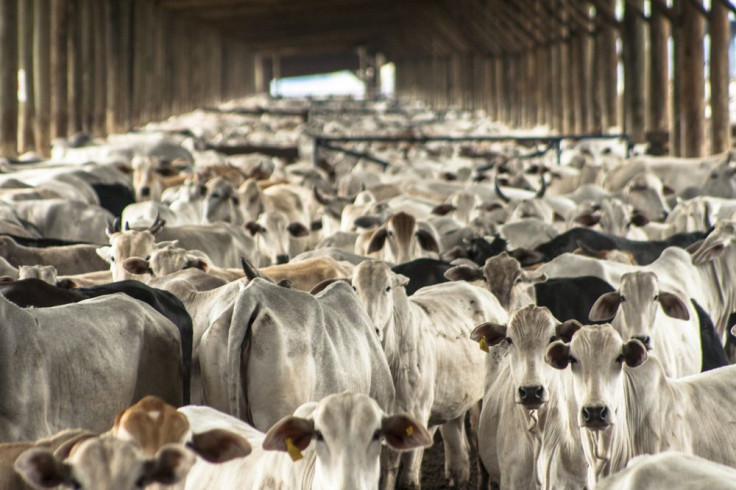High Levels Of Fecal Matter In Ground Beef Is Not A Meat Problem; It's A Farming Problem

We Americans love our beef. But when will this country’s love affair with meat and the unsanitary practices used to produce that meat come to a head? A recent study conducted by Consumer Reports has found that an alarming number of ground beef products found around the United States are contaminated with fecal matter. With Big Business’s hands all over the beef monopoly in the U.S., it’s becoming pretty clear that this is not a meat problem; it’s a farming problem.
“The most sustainable beef-production systems don’t rely on any daily drugs, don’t confine animals, and do allow them to eat a natural diet,” said Dr. Urvashi Rangan, executive director of the Center for Food Safety and Sustainability at Consumer Reports, in a statement. “Our findings show that more sustainable can mean safer meat. We suggest that you choose what’s labeled ‘grass-fed organic beef’ whenever you can.”
Where’s The (Clean) Beef?
Researchers from Consumer Reports purchased 300 packages of ground beef (458 pounds) from 103 grocery, big-box, and “natural” food stores in 26 cities across the U.S. All types of ground beef were included in the study, especially conventional beef — the most common type of beef made from cattle that are fed antibiotics and other drugs to promote growth and prevent disease. They also purchased beef that was raised by more sustainable methods, such as organic and grass-fed.
Out of all 458 pounds of ground beef purchased by the research team, each and every pound tested positive for fecal matter. Samples were also tested for the five most common types of bacteria found in ground beef - Clostridium perfringens, E. coli, Enterococcus, Salmonella, and Staphylococcus aureus. C. perfringens was found in around 20 percent of beef samples, S. aureus in 10 percent, and Salmonella in one percent. If you’re not worried about that one percent: “extrapolate that to the billions of pounds of ground beef we eat every year,” Rangan pointed out.
Where Is All Of This Beef Coming From?
Where most of the beef in this country comes from: one of the four major companies with a stranglehold on this country’s meat monopoly. Over 80 percent of America’s beef comes from four companies: Tyson Foods, Cargill Meat Solutions Corp., JBS USA, National Beef Packing Co., affectionately known as the Big Four. As one could imagine, hot water, chlorine-based or lactic acid washes, and other sanitary practices often fall by the wayside when we’re talking about 400 heads of cattle every hour.
“USDA has a presence in these plants to do inspections — though it’s against the companies’ wishes,” said Patty Lovera, assistant director of Food and Water Watch. “The economic power of the Big Four gives them a lot of political weight to push back against USDA inspectors’ efforts to enforce existing rules and to fight against any tighter safety standards being enacted. The sheer volume of beef that big-company plants crank out means that a quality control mistake at a single plant can lead to packages of contaminated beef ending up in stores and restaurants across 20 or 30 states.”
Leave It To The Little Guy (Farm)
American cattle used by the Big Four are raised on feedlots — large plots of land where cattle are housed and fattened for production — for a couple of reasons. The main one is economic feasibility. Raising up to 18,000 cattle on one feedlot clearly has its financial advantages. It also has its disadvantages, like the corn and soy-based diets that destroy a cow’s digestive tract, leading to ulcers and infection. Let’s not forget about the unsanitary practice of situating cattle one on top of the other to ensure the spread of bacteria and disease.
The U.S. Department of Agriculture recommends no more than 11 animals for every 20 acres of pasture. Not only does this guarantee that each animal will get adequate nutrition, but it also safeguards against stressful environmental factors and produces lean beef free from antibiotic and hormone supplementation. Conventional cattle farmers argue that without feedlots beef production in America would plummet and beef would become more expensive. I don’t know about you, but given the choice between expensive beef and beef covered in fecal matter, I’m taking expensive beef 100 percent of the time.
Published by Medicaldaily.com



























